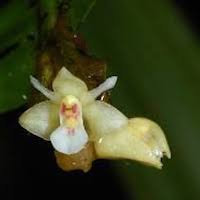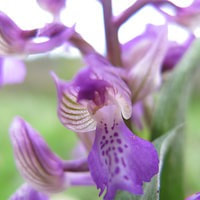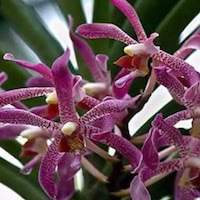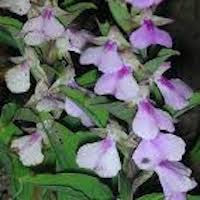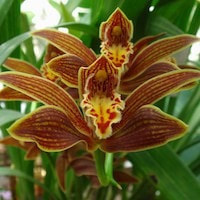WFR1- Women's Fresh 1 - Gone to the peach
|
Native Singaporean Orchid notes: Bulbophyllum Vaginatum
The Cymbidium Bicolor Pubescens orchid, known for its fragrant flowers and distinctive appearance, is featured in the Fresh 1 (Women) team-building perfume workshop. Described by Nparks, it has long, narrow leaves and pendulous inflorescences bearing small, scented blooms. This orchid is valued not only for its aromatic qualities resembling lotus and fresh beach air but also for its medicinal uses. Known as Visa Dhooli in Sri Lanka and used in China for treating fractures, it underscores its cultural and medicinal significance across different regions.
|
Therapeutic Orchid notes:
|
Anacamptis morio ssp. picta
The tubers of the Anacamptis morio ssp. picta orchid, harvested in Iran, are used for making salep, a traditional health drink and considered a superfood. These orchid species are protected in Europe due to conservation efforts. Historically, there was a misconception that salep provided significant nourishment in a compact form, leading to proposals for its inclusion in ship provisions to prevent famine during sea voyages. Orchid tubers, including those not used for salep, have also served as a food source during times of scarcity, highlighting their resourcefulness in providing sustenance in challenging circumstances. |
|
Arachnis Blume
The genus Arachnis, named after the Greek word for spider or scorpion, includes Scorpion Orchids found in Peninsular Thailand, Malaysia, Singapore, and Indonesia. These orchids have been pivotal in the global cut flower industry due to their ability to travel and thrive in various environments, facilitating extensive hybridization with other orchids. This has led to the creation of numerous new orchid hybrids, enhancing their popularity as ornamental plants worldwide and contributing significantly to the growth of the orchid industry. |
|
Brachycorythis obcordata
Brachycorythis, also known as Heart-shaped Brachycorythis or Baoye Lan in Chinese and Gangdol in Nepali, comprises over 30 terrestrial orchid species found in Africa and tropical Asia. The genus name comes from Greek words meaning "short" and "helmet," referring to the shape of its flowers. One species, B. obcordata, blooms from June to September across India, Bhutan, Bangladesh, and Myanmar, adorning its habitat with attractive flowers. Besides its ornamental value, B. obcordata is used in medicine as its root acts as an expectorant and antidiarrheal, and as food, its boiled pseudobulbs, leaves, and shoots offer nourishment and health benefits, reflecting its cultural and practical importance in local traditions. |
|
Cymbidium iridioides D. Don Syn. Cymbidium giganteum Wall ex Lindl.
Cymbidium iridioides, also known as Cymbidium giganteum or Huang chan Lan in Chinese, contains various phytochemicals like triterpene glucosides such as cymbidoside, and a taraxerane triterpenoid named taraxerone. Additionally, compounds like gigantol and sitosterol have been identified in this orchid. Taraxerone has shown no activity against certain cancer cell lines. In Nepal, the leaf juice of C. iridioides acts as a haemostatic to stop bleeding, while in India's Khasi Hills, it's used similarly and to treat diarrhea, highlighting its local uses and cultural importance in healthcare |
Other scent note
Scentopia Library Reference ingredient
Aloe Vera - Check details at Scentopia's scent library
Download the guided mediation that works best with this Orchid fragrance oil
| women_fresh_essential_oil_orchi_00001.mp3 | |
| File Size: | 171492 kb |
| File Type: | mp3 |

